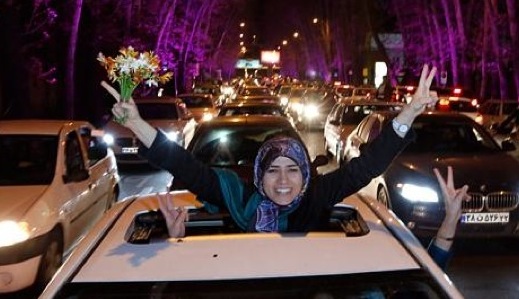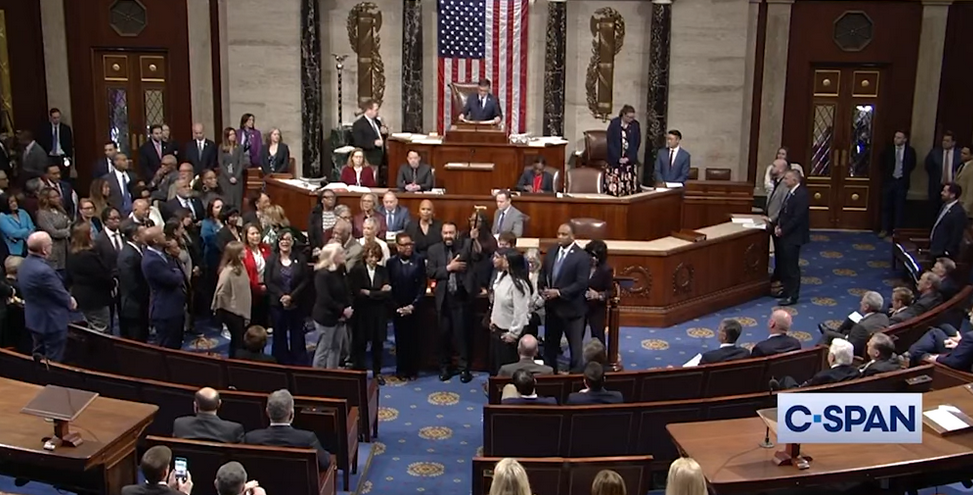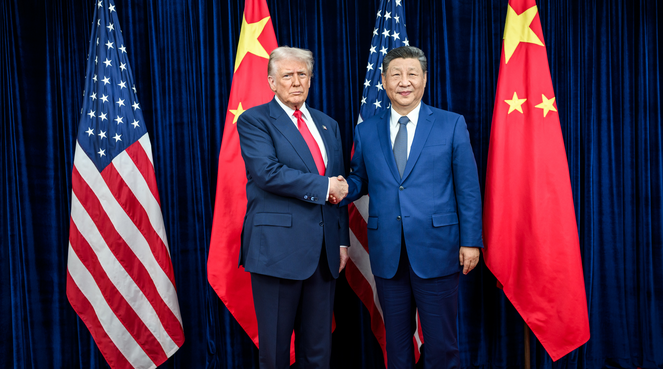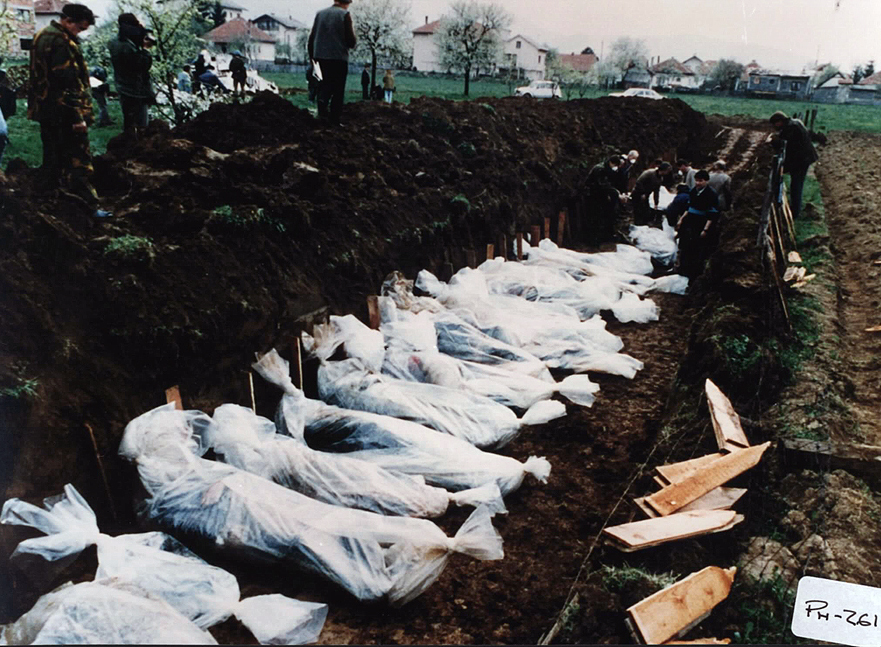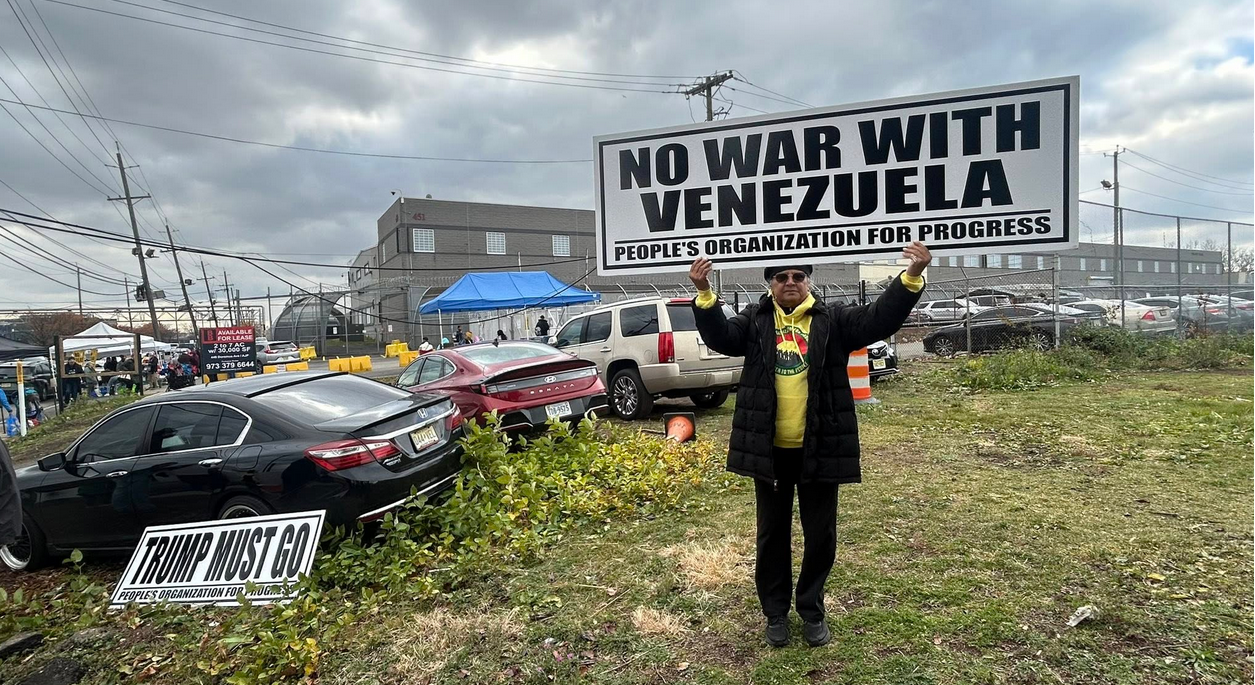Honking for peace–celebration in the streets of Tehran
History was made in Switzerland on Thursday. Under direction of President Obama, U.S. Secretary of State John Kerry had been in extended negotiations with Iran’s leadership over its nuclear program.
Led by the United States, the P5+1 (the U.S., United Kingdom, Germany, France, Russia, and China, facilitated by the European Union) had been engaged in serious, comprehensive negotiations with Iran with the goal of reaching a verifiable diplomatic resolution intended to prevent Iran from obtaining a nuclear weapon.
On Thursday, the end result was the framework of an agreement. The U.S. led the way in accomplishing something sweeping and amazing – easily one of the most significant foreign policy victories in several decades. It’s a very big deal.
Here is the fine print of the deal, according to officials at the U.S. State Department:
Centrifuges: Iran would have to reduce its total of about 19,000 centrifuges – 10,000 of which are still spinning today – down to 6,104 under the deal, with only 5,060 allowed to enrich uranium over the next 10 years. Centrifuges are tube-shaped machines used to enrich uranium, the material necessary for nuclear power and nuclear bombs.
Uranium enrichment: Iran’s centrifuges will only enrich uranium to 3.67% – enough for civil use to power parts of the country, but not enough to build a nuclear bomb. That agreement lasts 15 years. And Tehran has agreed not to build any new uranium enrichment facilities over that period as well. The 3.67% is a major decline, and it follows Iran’s move to water down its stockpile of 20% enriched uranium last year. In addition, Iran will reduce its current stockpile of 10,000 kilograms of low-enriched uranium to 300 kilograms for 15 years.
Breakout time: The period of time that it would take for Iran to acquire the material it needs to make one nuclear weapon, currently assessed at two to three months, would be extended to about one year under the deal. That year-long breakout period would be in place for at least 10 years.
Fordow facility: Iran’s Fordow nuclear reactor would stop enriching uranium for at least 15 years. It will not have fissile material at the facility, but it will be able to keep 1,000 centrifuges there. Fordow, one of the country’s biggest reactors, is buried more than 200 feet under the side of a mountain and was hidden from the international community until the U.S. revealed it in 2009.
Research and development: Iran can continue its research and development on enrichment, but that work will be limited to keep the country to its breakout time frame of one year. Though Iran will be required to make changes at a number of its facilities, including reducing centrifuges and rebuilding a heavy water reactor in Arak, the country will get to maintain its current facilities.
Inspections: Iran will be required to provide inspectors from the International Atomic Energy Agency, the U.N.’s nuclear watchdog, access to all of its declared facilities so that the agency can ensure there is no potential for military-related developments. That includes access to Parchin, an Iranian military facility related to its nuclear program. Western countries have been seeking unfettered access throughout Iran, not just declared facilities, as Iran has previously conducted nuclear work in secret.
Sanctions lifted: The United States and the European Union would lift their nuclear-related sanctions on the Iranian economy — a priority for Iran — after a U.N. watchdog verifies it has taken key steps. If there are violations, the sanctions will snap back into place. U.N. sanctions will also be lifted when Iran completes its nuclear-related steps, though some peripheral restrictions will be contained in a new Security Council resolution.
As it turned out, the Obama administration underpromised – but overdelivered.
This is truly a very big deal. This was only one common sense-paved path to preventing Iran from building or acquiring an A-bomb. It came peacefully and diplomatically. It negated the need for military intervention – while demonstrating once again globally that American exceptionalism is still very real.
No matter how you feel about President Obama and no matter which political party you belong to, you can rest a bit easier tonight. The American President’s statement from the Rose Garden on Thursday was carried live on Iranian television – something which never happens.
In Iran, people are dancing in the streets. Throughout Europe, there’s a genuine feeling of elation. After all, lives are saved.
The agreement won’t be final until June 31. Israel’s Prime Minister Benjamin Netanyahu, who doesn’t want any agreement, hates the deal. So do Republicans. That’s hardly a surprise.
The president stated: “It’s a good deal, a deal that meets our core objectives. This framework would cut off every pathway that Iran could take to develop a nuclear weapon.”
